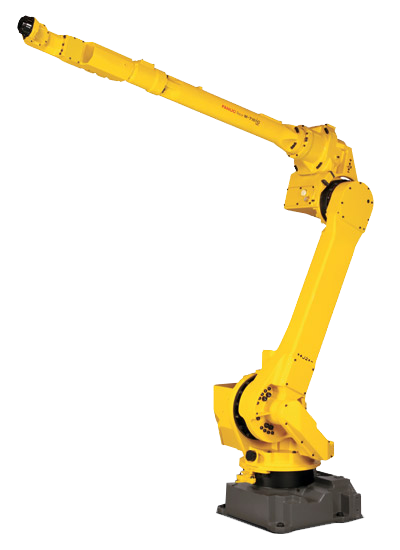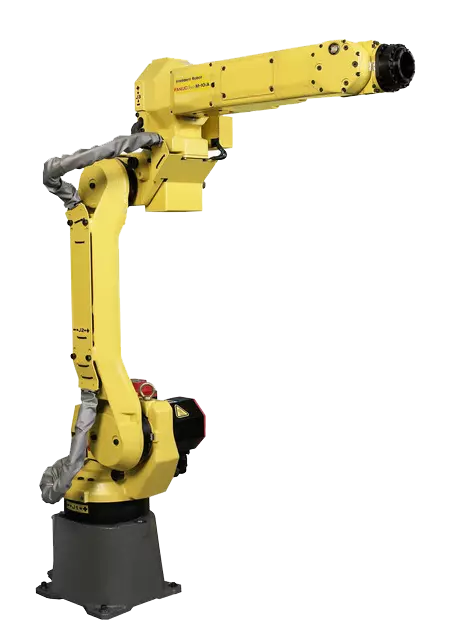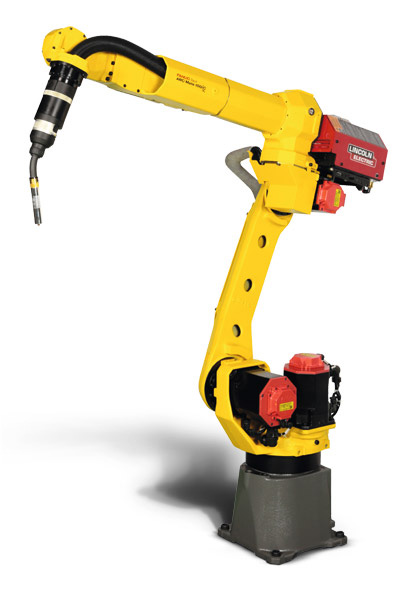Robotic Resistance Welding
Robotic resistance welding involves the joining of two metal workpieces together at a specific spot or point. Resistance welding is mainly used to weld together thinner metals such as sheet metal. During resistance welding, an electric current is used to heat the sheet metal pieces, melting and bonding them together. Pressure is applied to the workpieces while the electric current passes through the layers, creating the weld pool that as it cools forms the weld joint.
In resistance welding, the weld joint is commonly referred to as a nugget, which occurs at the exact location the weld is executed from. The duration of the application of the electric current determines the size of the weld nugget. Weld quality is determined by the amount of pressure applied. More pressure keeps the nugget contained and results in a clean, high-quality weld.
Types of resistance welding are categorized by the shape of the weld and how pressure is applied to create the weld joint. Spot welding, seam welding, flash welding, and projection welding are all types of resistance welding.
Spot welding is the most common type of resistance welding for robotic automation. This highly economical welding method is widely used in automotive manufacturing for the production of car frames. Robotic spot welding involves the welding of thinner metals together through the creation of an electric current with two copper alloy electrodes. The metals resist the electric current which causes them to heat and melt, creating a weld pool at the spot of application of the weld gun. Once the weld pool cools, the metals are bonded together. The ABB IRB 6640 and the FANUC R2000ib are both designed for robotic spot welding applications. As many units were performing spot welding, a good amount of used FANUC robots for sale come with spot welding equipment.
Resistance welding applications can be automated through the integration of a welding robot and tooling. Articulated robots, specifically six-axis robots, are used for automating resistance welding processes. Their expansive reach allows them to access different angles and work with larger workpieces. While their payload capacities are designed to operate heavy spot welding guns repeatedly without failure.
The precision and accuracy of welding robots makes them ideal candidates for resistance welding, as this welding method requires great skill and control. A FANUC R2000ib/250F is able to produce multiple spot welds without deviation and more speed than manual welders.
In addition to the welding robot, a servo welding gun is integrated as the end-effector. Servo welding guns used for resistance welding are powered by either hydraulic or pneumatic actuators. Benefits of servo weld guns include reduced cycle times as well as reduced routine maintenance requirements.
The desire to improve product quality is the main driver behind the push for automating with industrial robots. Industrial robots operate with a high level of repeatability and control. This is crucial for ensuring accurate and consistent heat and pressure are applied to metals in order to produce high-quality welds. Spot welding processes can require several spot welds for a single workpiece. Robots are able to consistently reproduce welds over and over. Every weld is placed accurately resulting in higher quality products with robotic resistance welding.




